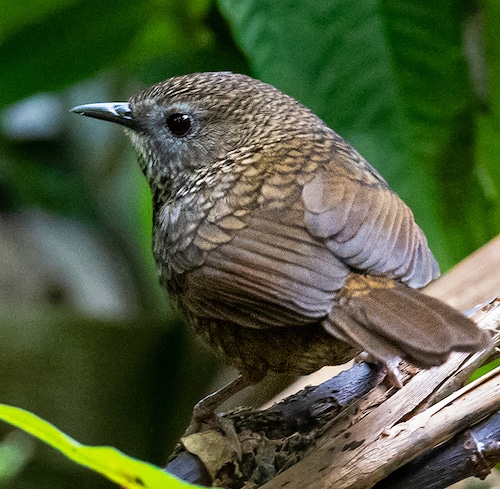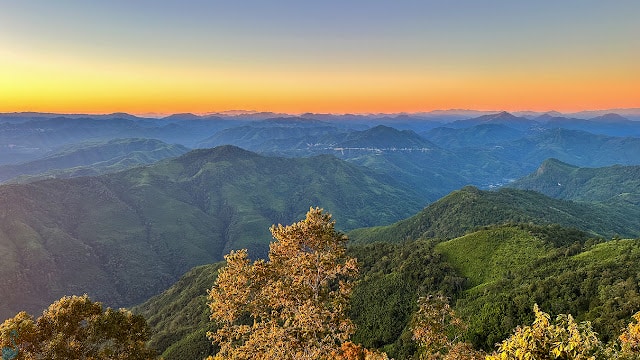Mizoram

Mizoram is one of the ‘Seven Sister States’ in North Eastern India. It shares land borders with the states of Tripura, Assam, Manipur, Bangladesh and the Chin State of Burma. Mizoram literally means land of the highlanders and it became the 23rd state of India in 1987. It has a population (2024) of just over 1.1 million people. It ranks second in India with a literacy rate of nearly 90%.
Mizoram has the most varied hilly terrain in the eastern part of India. The hills are high (averaging 1000 metres), steep and separated by rivers which flow either to the north or south creating deep gorges between the hill ranges. The highest peak is the Blue Mountain with a height of 2210 metres. Its tropical location combined with the high altitude gives it a mild climate all year round. Mizoram has a mild climate, not very warm in summer and not very cold in winter. During winter, the temperature varies from c.10°C to c.20°C and in summer it varies between c.20°C to c.30°C. The entire area is under the regular influence of monsoons. It rains heavily from May to September and the average rainfall is c.250 cm, per annum. Winter in Mizoram is normally rain-free. Consequently, it is rich in flora and fauna and many kinds of tropical trees and plants thrive in the area.
The biggest river is the River Kaladan also known as Chhimtuipui Lui in local Mizo language. It originates from Chin State in Burma and passes through Saiha and Lawngtlai districts in Southern tip of Mizoram and goes back to Burma’s Rakhine state, finally it enters Bay of Bengal at Akyab, a very popular port in Sittwe, Burma. The Indian government has invested millions of rupees to set up inland water ways along this river to trade with Burma. Although many more rivers and streams drain the hill ranges, the most important and useful rivers are the Tlawng (also known as Dhaleswari or Katakhal), Tut (Gutur), Tuirial (Sonai) and Tuivawl which flow through the northern territory and eventually join the Barak River in Cachar District. The Koldoyne (Chhimtuipui) which originates in Burma, is an important river in the south of Mizoram. It has four tributaries and the river is in patches. The western part is drained by Karnaphuli (Khawthlang tuipui) and its tributaries. Before Independence, access to other parts of the country was only possible through the river routes via Cachar in the north, and via Chittagong in the south. Entry through the latter was cut off when the subcontinent was partitioned and ceded to East Pakistan (now Bangladesh) in 1947.

Sunset near Darzo – ©Aseem Kothiala
Lakes are scattered all over the state, but the most important among these are Palak dil (Pala Tipo), Tamdil, Rungdil, and Rengdil. The Palak lake, the biggest lake in Mizoram, covers an area of 30 hectares. The Tamdil lake is a natural lake situated c.100 km from Aizawl and is an important tourist attraction and a holiday resort.
Around one third of Mizoram is covered with wild bamboo forests, many of which are largely unexploited. However, Mizoram harvests 40% of India’s 80 million-ton annual bamboo crop. Agriculture is the mainstay of the people of Mizoram. More than 70% of the population is engaged in some form of agriculture. The age-old practice of Jhum cultivation is carried out annually by a large number of people living in rural areas. The climatic conditions of the state, its location in the tropic and temperate zones, and its various soil types along with well-distributed rainfall spread over eight to ten months in the year, have all contributed to a wide spectrum of rich and varied flora and fauna in Mizoram. These natural features and resources also offer opportunities for growing a variety of horticultural crops.
Birding Mizoram
-
Number of bird species: 678
(As at March 2024)State Bird - Mrs Humes Pheasant Syrmaticus humiae
-
Avibase - The World Bird Database
Checklist PDFCompact checklist
-
A Pocket Guide to the Birds of Mizoram
| By Anwaruddin Choudhury | The Rhino Foundation | 2008 | Paperback | 122 pages, B/w illustrations, maps | ISBN: 9788190086677 Buy this book from NHBS.com -
Popular Birds of Mizoram
| By H Lalthanzara & Raju Kasambe | Scientific Book Centre | 2015 | Paperback | 124 pages, colour illustrations, 1 colour map | ISBN: 9788128700149 Buy this book from NHBS.com
-
NP Murlen
InformationSatellite ViewThe tropical, semi-evergreen and sub montane Forests of Murlen are home to a rich variety of flora and fauna. About 15 species of mammals, 150 species of birds, 35 species of Medicinal plants, 2 species of bamboos, and 4 species of orchids so far have been recorded in this Park. -
NP Phawngpui
InformationSatellite ViewThe Phawngpui National Park is located in the district of Chhimtuipui, near the Myanmar border in Mizoram. The park covers an area of around 50sq.kms, which abounds in natural beauty. The Park also encloses the Phawngpui Peak, which stands at a height of 2165m above the sea level. The Phawngpui Peak is the highest mountain peak in the whole of Mizoram. From this peak, one can enjoy an enthralling view of the beauty of Mizoram… -
TR Dampa
InformationSatellite ViewDampa Tiger Reserve is the natural home of leopards, Indian bison, barking deer, sloth bear, gibbons, langurs, slow loris, rhesus macaque, Indian Python Python Molurus Molurus, wild boar and a variety of birds -
WS Khawnglung
WebpageSatellite ViewGood for mammals and birds with a variety of hornbills, partidges and pheasants in particular. -
WS Lengteng
InformationSatellite ViewLengteng is home to a variety of animal species including birds. The most notable birds are the dark-rumped swift, grey sibia, Mrs. Hume's pheasant, grey peacock pheasant, Oriental pied hornbill, rufous-bellied eagle, and white-naped yuhina. Blyth’s tragopan was also reported from a survey in 2011. Common animal species include tiger, leopard, sambar deer, barking deer, goral, serow, hoolock gibbon, rhesus macaque and wild boar. -
WS Ngengpui
WebpageSatellite ViewBhutan peacock-pheasant (Varihaw), White cheeked patriged (Varung), Assam or Mountain bamboo patridge (Vahlah), Great Indian hornbill (Vapual), Hornbills (Kawlhawk), Pied hornbill (Vahai), Imperial pegion (Bullut) etc. -
WS Palak Dil
InformationSatellite ViewPalak Dil is home to a number of resident and migratory animals. It is particularly rich in a variety of birds, including endemic bird species. The water is inhabited by common and unique species of fishes. Different species of prawns, snails, crabs, turtles and tortoises. More than 70 species of birds have been recorded from the lake and its shore. Among unique species are Nepal fulvetta, white-bellied yuhina, little spiderhunter, streaked spinderhunter, yellow wagtail, black-capped kingfisher, hooded pitta, spot-breasted scimitar babbler, and white-rumped munia, which are rarely seen in other parts of the region. In addition aquatic birds and wild ducks in Palak Dil are found nowhere else in Mizoram. -
WS Pualreng
WebpageSatellite ViewGreat Indian hornbill (Vapual), Wreathed Hornbill (Kawlhawk), Pied hornbill (Vahai), Khaleeej Pheasant (Vahrit), Bhutan peacock pheasant (Varihaw), Red jungle fowl (Ramar), White cheeked partridge (Varung) etc. -
WS Tawi
WebpageSatellite ViewA very wide range of mammals including various cats and bears. Imperial Pigeon, junglefowl and a number of pheasants, partridges and hornbills are possible.
-
Birds of North-east India
Facebook GroupDiscussion Group
-
2023 [11 November] - Aseem Kothiala
ReportThe next day morning, we went around birding in the hills of Sialsuk. The Red-whiskered Bulbul were seen in large number, as we entered the trail, could hear the Spot-breasted Laughingthrush, who typically, would appear very briefly and disappear. From the thick canopy, we sighted a Black Eagle, who flew very close to us and finally, sat on a branch very high from where we were. A large mixed hunting party appeared and the forest was filled with their chirps, we could identify a few as the Grey-hooded Warbler, along with some other warblers that we could not identify due to low light. However we sighted a couple of Scarlet Minivet. White-throated Bulbul, and a few other birds were seen too. (Refer to eBird Check list). As we waited for the hunting party to come closer, sighted a small flock of Lesser Necklaced Laughingthrush going down hill, they managed to stay low and disappear into the thickets.

